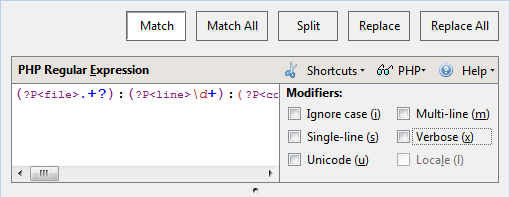Ruby regular expressions ruby regex for short help you find specific patterns inside strings with the intent of extracting data for further processing two common use cases for regular expressions include validation parsing.
Ruby string replace regex.
Syntax pattern pattern im option can be specified r usr local.
Last gives you the last of those arrays and first then gives you the string in it.
W a word character letter or digit.
Like the index method if the pattern is matched the index of the string is returned.
Replacing a single word is fine.
Let s see a few examples.
If the pattern is not matched nil is returned.
Ruby program that uses sub with regexp value cat and dog replaced at a matching the regexp with another string.
Value sub c w w bird puts value output bird and dog regexp pattern c the lowercase letter c.
Think about an email address with a ruby regex you can define what a valid email address looks like.
General delimited regular expression.
Oh wait it s just a string.
Substitutions are language elements that are recognized only within replacement patterns.
In other words your program will be able to tell.
We can t eat that.
You can make the regular expression object by the new method of the regexp like below.
You can also make substitutions to replace one part of a string with another string.
The replacement pattern can consist of one or more substitutions along with literal characters.
But what if you could replace a pattern.
For instance in an example string foo bar baz replacing foo with boo in would yield boo bar baz you can do this and many more things using the sub and gsub method in the string class.
Let s see how to use the string in ruby.
Anyway ruby s gsub method can do a lot more than simple substitution.
A regular expression is a special sequence of characters that helps you match or find other strings or sets of strings using a specialized syntax held in a pattern.
They use a regular expression pattern to define all or part of the text that is to replace matched text in the input string.
Scan creates an array which for each item in string1 contains the text between the and the in a one element array because when used with a regex containing capturing groups scan creates an array containing the captures for each match.
A regular expression literal is a pattern between slashes or between arbitrary delimiters followed by r as follows.
Replace patterns with a regular expression.



























